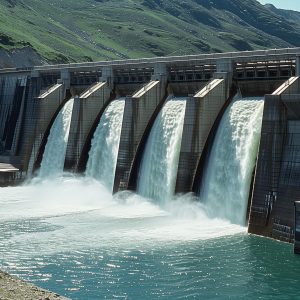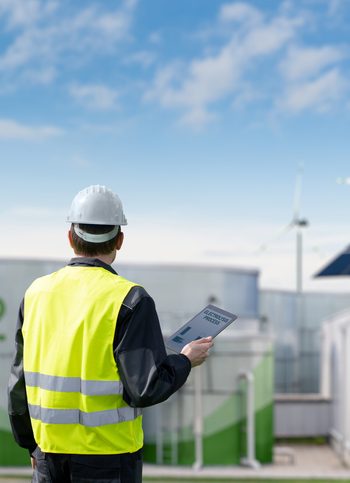-
View Profile
Managing Consultant
2025 Outlook for the Hydropower Industry
Hydropower
Managing Consultant

The hydropower industry is poised for a transformative 2025, building on significant advancements and sector shifts in 2024.
As hydropower strengthens its role in the global renewable energy mix, the upcoming year will be defined by deeper integration with hydrogen technologies, rapid digitalisation, expansion in pumped storage, and reinforced climate resilience.
Here’s what leaders in hydropower can anticipate in 2025, grounded in the year’s pivotal developments.

In 2024, hydropower’s reliability as a consistent energy source catalysed its integration with green hydrogen production. By leveraging hydropower’s steady output, many regions are accelerating their hydrogen initiatives. This trend is expected to gain traction in 2025, especially in countries like the UK, which announced a significant Hydrogen Net Zero Investment Roadmap (gov.uk). The strategy aims to bolster projects designed to drive green hydrogen production, addressing energy storage needs and supporting decarbonisation efforts across industries.
For hydropower operators, 2025 will likely bring new opportunities to partner on hydrogen projects, backed by government support and global policy initiatives. Industry experts predict that hydropower facilities could see a surge in demand as they become essential nodes in the green hydrogen ecosystem, providing a renewable feedstock for electrolysers at scale
The push towards digitalisation in 2024 has reshaped hydropower operations, unlocking efficiencies that enhance the sector’s flexibility and sustainability.
Projects like the European Commission’s XFLEX HYDRO are pioneering a suite of technologies – from smart digital controls to hybrid hydro-battery systems – positioning hydropower to meet modern grid demands.
As we look to 2025, these advancements will become more commonplace across the industry. Operators who adopt digital tools, such as AI-based monitoring systems and predictive maintenance algorithms, will benefit from streamlined operations, reduced downtime, and optimised energy output. For hydropower facilities, digital upgrades mean more adaptive, intelligent systems capable of supporting an increasingly dynamic energy landscape.
2024 underscored the critical role of pumped storage hydropower (PSH) in energy stability. As renewable sources like wind and solar grow, so does the demand for large-scale storage solutions that can balance supply and demand. The pumped storage boom will likely escalate in 2025, with projects like the UK’s Coire Glas aiming to double the nation’s storage capacity, setting a benchmark for future endeavours (sse.com).
For the hydropower sector, this presents a twofold opportunity: first, as developers seek to scale up existing facilities, and second, as new PSH projects align with climate targets. In 2025, PSH will be crucial not only as a stabiliser for the grid but also as an economical alternative to battery storage, potentially attracting significant investment from both public and private stakeholders (hydropower.org).
The impacts of climate change have placed resilience at the forefront of hydropower infrastructure planning. In 2024, the Hydropower Sector Climate Resilience Guide became a critical resource, offering frameworks to safeguard facilities against extreme weather, shifting water patterns, and fluctuating seasonal demands (hydropower.org).
As climate risks intensify, 2025 will see hydropower companies increasingly implementing climate-resilient designs and operational strategies. Facilities are expected to adopt more adaptive models, with investments directed toward infrastructure that can withstand environmental stressors. For industry leaders, this will mean balancing operational needs with climate-conscious designs, fostering a future-proof industry that aligns with long-term sustainability goals.
In 2024, the growing synergy between hydropower and hydrogen was bolstered by international policies, investment incentives, and strategic collaborations. The International Renewable Energy Agency (IRENA) reported an increase in national strategies and roadmaps focused on green hydrogen, setting the stage for a robust alignment of hydropower in this area in 2025.
Industry leaders can expect intensified collaboration opportunities with hydrogen developers, facilitated by government support and evolving regulations. The alignment of hydropower with hydrogen production underscores a shared path toward decarbonisation, and 2025 will likely bring even more integrative projects, moving the sector closer to achieving substantial emissions reductions.
The developments of 2024 have set the stage for a groundbreaking 2025. With hydropower advancing on multiple fronts—integrating hydrogen, embracing digitalisation, expanding storage solutions, and building climate resilience—the industry is becoming indispensable to the clean energy transition. For leaders in the field, 2025 represents an opportunity to solidify hydropower’s place as a dynamic, multifaceted player in the renewable energy ecosystem.
By aligning strategies with these emerging trends, hydropower companies can capitalise on opportunities to innovate, adapt, and thrive in a rapidly evolving market. The year ahead promises to be one of significant growth and progress, where hydropower is not just a source of energy but a driver of a sustainable, integrated, and resilient energy future.